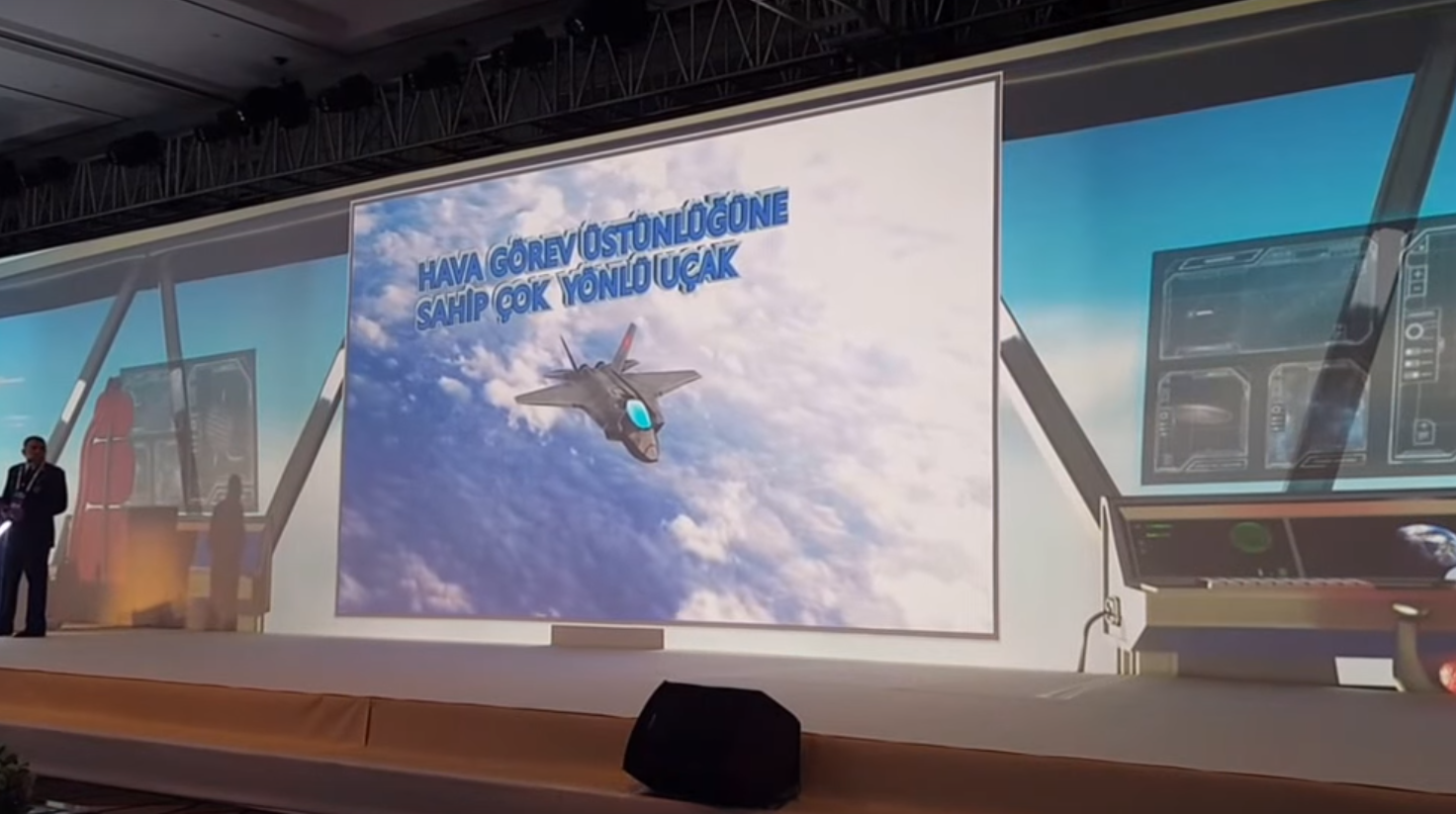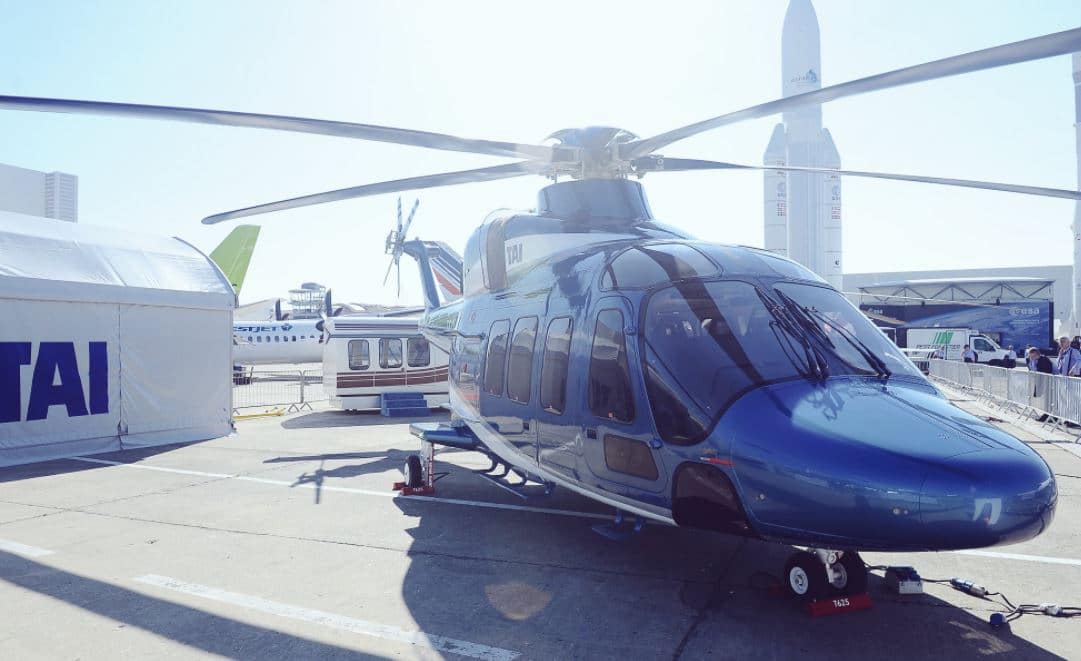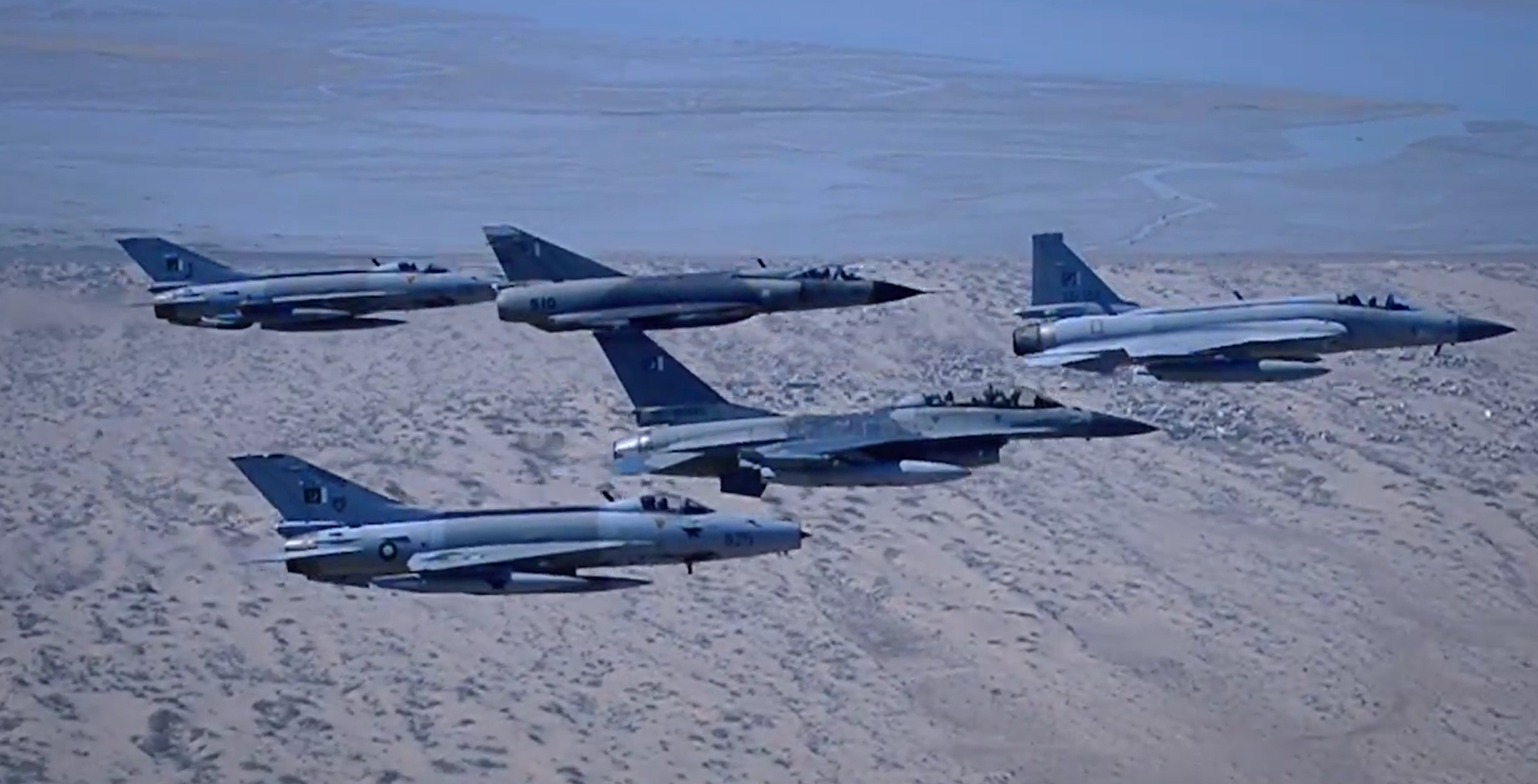2817Views 17Comments

Is Pakistan interested in the Turkish TFX (Part 2)
In part one of this series, it was determined that the Turkish Aerospace Industries (TAI) TFX could be a potential next generation fighter option for the Pakistan Air Force (PAF).
As to whether the PAF would sign onto the TFX could be a very different story. This is not to completely preclude the possibility, but it would be worth reviewing exactly what the PAF is looking for in its pursuit of a next-generation fighter platform. In March, Air Chief Marshal (ACM) Sohail Aman stated that conceptualizing the PAF’s next generation fighter was of primary urgency, but admitted that its development would be the PAF’s most difficult challenge on the horizon. These two points indicate that Air Headquarters (AHQ) is being inductive in terms of its next steps. It is not just looking at existing platforms with the goal of seeing which one best aligns with the PAF’s requirements, rather, PAF AHQ is also defining those requirements, and in turn, it is trying to determine the steps necessary in order to bring those requirements to fruition.
The other issue of concern to AHQ is its desire to make the PAF’s next generation fighter a leading driver of indigenization and domestic defence industry development. In parallel with domestic requirements building design, the design needs to be sourced as much as possible domestically. Retired PAF Air Commodore Kaiser Tufail even observed that the intent on domestic development was genuine, it would be unfair to paint the PAF’s approach in the lenses of an off-the-shelf program.
Kamra Aviation City is at the center of the PAF’s intent to build the requisite human capital, but doing it all alone, especially with a relatively tight funding ability, is not a feasible task, especially for Pakistan (which is not as well developed as Turkey, India or China). Securing an overseas partner to help with development and building domestic capacities are not mutually exclusive, the two can work hand-in-hand. However, the PAF still needs a partner, so as to make up for the research and development as well as technology capacities it does not possess.
Can participating in the TFX program fulfill those critical needs (i.e. drive domestic industry growth, cutting down dependence on external sources, and serve as a capable platform)? There is no simple “yes” or “no” answer – it will simply depend on where the facts tilt. One of the good things about the TFX rests in the reality that it is in the early stages of development. Make no mistake, this is also a major risk (especially in comparison to the AVIC FC-31), but entering with developing funding affords the PAF several benefits.
First, it can work with TAI to closely define its requirements from the onset (e.g. avoiding sensitive U.S.-origin subsystems), and this could be translated into the project. Second, the PAF can earn a number of rights over the platform, such as the freedom to arm and configure the platform at will, maintain a deep level of knowledge and control over certain subsystems (e.g. radar and avionics), and of course, produce (or at least fully maintain) the platform domestically. Supporting TAI at this early stage may even yield off-sets that could feed into Pakistan’s defence industry, e.g. manufacturing certain parts for all TFX fighters.
However, it has to be asked – would the PAF be unable to procure any of the above from China via the FC-31? Of course, one could speculate that China has a vested interest in keeping Pakistan dependent in as many areas as possible, so as to benefit the Chinese industry over the long-term. But this is speculation, especially since China has a strategic interest in trying to pry Pakistan – and the Pakistani military – away from U.S. influence. Granted, China will not give total independence, but Pakistan could acquire enough to fully operate and flexibly configure the platform.
One could also suggest that China will be unwilling to release critical knowledge behind the FC-31, it is a next-generation platform, after all. But in light of the fact that AVIC marketed the FC-31 as an export-focused co-development program, to suggest that enough (for full domestic support and customization) will not be released does not line up with the reality, at least at this time. It must also be noted that the FC-31 will have a shorter development lead-time thanks to the development legwork that was already completed via the J-31 technology demonstrator.
To be frank, the only decisive argument in favour of the TFX rests in the objective of diversification for the sake of hedging and independence, but this is not a luxury afforded to those in need; rather, it is for those who are able. In other words, the PAF cannot pursue the TFX route on its own, not without sincere and competent support from the Pakistani government. If there are problems in this dynamic (e.g. inefficiencies, corruption, etc), then the PAF’s aspirations will suffer.
It seems the PAF has two options in terms of foreign next-generation projects, though the FC-31 is at a later stage of its development (compared to the TFX). The route taken will be up to the PAF, but there may be a third avenue that could draw on the best of both programs. The PAF could potentially adopt the FC-31 airframe and engine (WS-13 or RD-33MK), but configure it with the radar, avionics and weapons suite of the TFX. In this case, the PAF’s investment in the TFX could be targeted and less risky, yet still afford it with diversity and control over critical aspects of the platform it will be using in the future. This is not to say the PAF ought to take this route, but it could be another option.
It is likely that the PAF is anticipating its need for a next generation fighter in the mid-to-late 2020s, around which time the F-16A/Bs will need to be retired. The plausible but uncertain induction of another platform (e.g. a JF-17 Block-IV or another fighter) notwithstanding, expediency may be another factor the PAF will be evaluating between its options. In any case, if the next twelve months are anything like the past year, the PAF may offer a clearer understanding of where it is heading in this area.



17 Comments
by nob hamid gul
Jf 17 block 3 with rd33mk .5th gen fighter tfx with rd 33mk and fc-31 airframe no third parties obstacle that too equipped with Turkish avionics and radars. This would also satisfy Paf obsess of Western system and ofcourse local production. I wish Paf to join the tfx production.. Pakistan does possess some stealth capabilities.
And What if sukhoi 35 replace f-16 with 40 – 50 units.
It sounds really good
by Wajahat Shafi
PAF
MUST keep out of this project as Turkish no doubt our friend but it has
USA based technology ,at any time when we want to use it against
adversary ,USA can veto it like in the past, PAF MUST go to J20 and J31
project
by SP
Pakistan cannot wait another decade before inducting starting to induct a new platform, without leaving serious gaps in its ability to defend the country with a belligerent neighbour on the rise and posing serious risks to the nation. PAF will need to make a decision soon and start the induction at the start of the next decade for these aircrafts to be combat ready by 2030.
by jaxtrjin
The article is like casual discussion or long comment. No real insight or interesting content to read about the topic. Hopefully next part will be better.
by Sinan Cagrı Kurt
As a Turk I must accept buying/participating Tfx program is not best Interest of Pakistan even though it won’t gonna have any critical US based technologies that would prevent Turkey to sell Tfx to Pakistan. Since Working with UK and other European countries is also increase our potential market like Pakistan etc.
Instead, Pakistan should get Avionics systems with ToT, As early as possible since you are in immediate need. Turkish scientist working on Aesa radar for more than decade(3 + years for building prototype for Çafrad and another 8+ years for fundamental research on GaN). Integrating this know how to jf17 block iv would be more economical and you could put them into sky earlier.
by Bilal Khan - Quwa
Yes, it’s really just one main point being conveyed. The lighter approach was taken intentionally and mostly in response to more casual defence observers. A more granular piece will be ready once TAI finalizes the design and its technology partners.
by bill
The article has some sort of negative tone towards China, however fact is that we are dependent on other due to our own lapses. But mostly our tilt towards USA has effected us most, but after Atomic explosions the US sanctions prove to be blessing in disguise for us.
Further in my view instead of comparing FC31 and TFX they should be considered for acquisition in different future times. In near future say 5 to 6 Years we may have limited numbers of FC31 along with Jf17 block III to compensate along with F16s. It is given that after 2020 we may retire F16s, it is interesting to note that after Mlu the service life of F16s is extended almost up to 20 Years or year wise up to 2034-5. The F16s only require relevant upgrades if allowed by USA. Further TFX tech may be used in 5th gen Jet of future.
by Bilal Khan - Quwa
No negative tone was intended, rather, the opposite.
The criticisms against FC-31 are all hypothetical arguments that I’ve come across over the past few months, for each the following sentence disqualifies the critique.
For example:
Claim: “One could also suggest that China will be unwilling to release critical knowledge behind the FC-31, it is a next-generation platform, after all.”
Counter (next sentence): “But in light of the fact that AVIC marketed the FC-31 as an export-focused co-development program, to suggest that enough (for full domestic support and customization) will not be released does not line up with the reality, at least at this time.” (the last bit was inserted because if the PLAAF or PLAN do decide to adopt the J-31, then the program may end up being locked down like the J-20).
by Syed
They will try to nip it in the bud like they did with Qadafi,Bhutto and Faisal,if you don’t see that then it’s your problem…,,,,Turkey get ready for some more bombings
by Sami Shahid
But TFX is still under development ? I guess
by 321
As said in the article, the two platforms provide different advantages and disadvantages. That being said we don’t have to choose only one.
FC-31
The advantage of this is that it is much further along in its development. Furthermore, being Chinese it is not sanction prone (unless China decides to do a 180). Also, given that it is export oriented, and the nature of Pak-China relationship, Pakistan could quite possibly work out a ToT and produce it under license.
The downside here is that, imo, Pakistan is becoming too dependent on Chinese tech which is the mistake it made with the US. We should not do so again no matter how friendly we are. Diversity could also help in making Pakistan’s industry much better in the future given that we are in a position where we have access to both Western and Chinese (maybe Russian too in the future) design philosophies.
TFX
The advantage here is that being early in its development, Pakistan can customize it more than even a ToT FC-31. We also get valuable design experience which we sorely need to make ourselves self-sufficient. Furthermore, as partners, we would have certain rights to the system which might not be available with a ToT FC-31. Basically, the TFX is something which we need to build and strengthen our FUTURE defence industry capabilities.
The disadvantage as outlined is that it is more prone to sanctions by the west. It also is a long term project which requires considerable government support and funding whereas the PAF might want 5th gen capabilities earlier with less hassle.
My proposal is to obtain the FC-31 (preferably with ToT) to not only shore up our short term needs but also to serve as the core platform. This provides us with an early 5th gen capability that is not sanction prone. The TFX would eventually supplement the FC-31 fleet providing diversity to our 5th gen fleet. By this time we would also have the experience to design our own aircraft including the future 6th gen platforms. Our economy inshallah will also be strong enough to support the R&D required.
by MT
Hang on till 2030. Turks r at their 1st attempt to make fighter jet
Its 5 step jump as theirt past experiences r limited to trainers only
by DB100-SM2
Not quite the Turks have experience producing 4th generation combat aircraft. The licence production of F-16’s up to Block 50+ level together with the development of indigenous sub-systems for the F-16 Ozgur program is testament to this. The Turks have also acquired technology developed for the F-35 which it will utilise in the TFX program: advanced composite fuselage, full glass integrated cockpit, network centricity etc
by Bilal Khan - Quwa
Our good friend MT will tell you – possibly word for word – “Turke is tier 4 in aerospace. the F-35 composite work is from Lockheed Martin and American companies. All of Turkey’s defence industry is license assembly from France, Germany and UK. TFX will take 30 years.”
by Abdul Rashid
Now just up-vote your own comment for the full effect.
by MT
1- What % of F16 hardware were manufactured by Turks
You mean to say that F-16 ozgur which only makes indigenous mission computer and avionics gives you all experience needed for development of fighter aircraft
3. advanced composite fuselage,cockpit & network capability are one of the most basic subsystem.
These program dont push Turkey in category of Tier1 aeronautical industry
@Bilal Khan – Quwa
IF you read my post, I did mention that Turks are in tier2 list along side India viz a viz in Aeronautical industry. But they are decade away from developing their AESA radar, BVRAAM, Indigenous SAM(Hisar is as indigenous as Brahmos, they uses almost every system from Diehl Ag germany) . Turks have almost negligible competency in Turbofan engine development.
Turks cant develop TF-X without BAE , Europen, American/Israeli consultancy.
by Zahid Hameed
Why not Turkey will be offered a collaboration in the Pakistan JF17 Program and make fighter a real true 4++ generation aircraft which will full fill all the requirements of both the Air Forces.